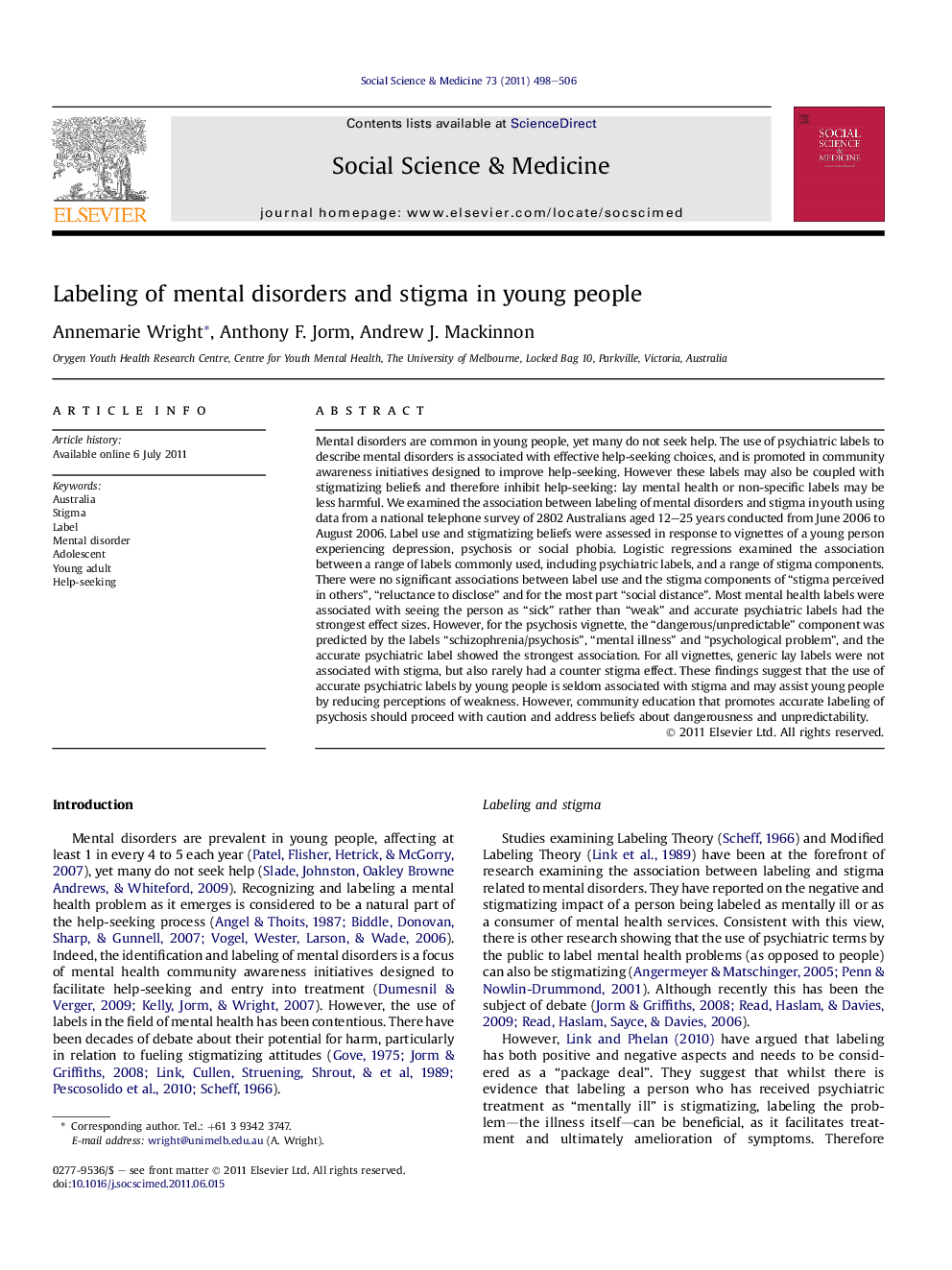| کد مقاله | کد نشریه | سال انتشار | مقاله انگلیسی | نسخه تمام متن |
|---|---|---|---|---|
| 952916 | 927552 | 2011 | 9 صفحه PDF | دانلود رایگان |

Mental disorders are common in young people, yet many do not seek help. The use of psychiatric labels to describe mental disorders is associated with effective help-seeking choices, and is promoted in community awareness initiatives designed to improve help-seeking. However these labels may also be coupled with stigmatizing beliefs and therefore inhibit help-seeking: lay mental health or non-specific labels may be less harmful. We examined the association between labeling of mental disorders and stigma in youth using data from a national telephone survey of 2802 Australians aged 12–25 years conducted from June 2006 to August 2006. Label use and stigmatizing beliefs were assessed in response to vignettes of a young person experiencing depression, psychosis or social phobia. Logistic regressions examined the association between a range of labels commonly used, including psychiatric labels, and a range of stigma components. There were no significant associations between label use and the stigma components of “stigma perceived in others”, “reluctance to disclose” and for the most part “social distance”. Most mental health labels were associated with seeing the person as “sick” rather than “weak” and accurate psychiatric labels had the strongest effect sizes. However, for the psychosis vignette, the “dangerous/unpredictable” component was predicted by the labels “schizophrenia/psychosis”, “mental illness” and “psychological problem”, and the accurate psychiatric label showed the strongest association. For all vignettes, generic lay labels were not associated with stigma, but also rarely had a counter stigma effect. These findings suggest that the use of accurate psychiatric labels by young people is seldom associated with stigma and may assist young people by reducing perceptions of weakness. However, community education that promotes accurate labeling of psychosis should proceed with caution and address beliefs about dangerousness and unpredictability.
► Examines commonly used labels for mental disorders and stigma in a national sample of Australian young people.
► Accurate psychiatric labels were associated with reduced perceptions of weakness and rarely associated with other stigma.
► Accurate and lay mental health labels were associated with perceived dangerousness and unpredictability for psychosis only.
► Provides new insights into this contested area by focusing on unprompted labeling and a range of stigma components.
► The benefits of accurate psychiatric labeling for help-seeking are unlikely to be hindered by stigma in most instances.
Journal: Social Science & Medicine - Volume 73, Issue 4, August 2011, Pages 498–506